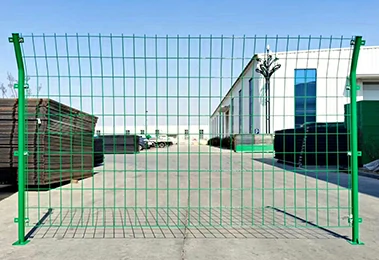 TEL:
+86-13102802206
TEL:
+86-13102802206
 Email:
fencenetting@china.com
Email:
fencenetting@china.com
 Language
Language
 TEL:
+86-13102802206
TEL:
+86-13102802206
 Email:
fencenetting@china.com
Email:
fencenetting@china.com
 Language
Language


Rock Basket Retaining Walls A Landscape Solution
Retaining walls have long been a crucial element in landscape architecture, providing structural support, preventing soil erosion, and enhancing aesthetic appeal. Among the various types of retaining walls, rock basket retaining walls stand out due to their environmentally friendly features and robust design. Also known as gabion walls, these structures consist of wire mesh baskets filled with rocks or other materials, creating a durable and visually appealing landscape feature.
One of the most significant advantages of rock basket retaining walls is their permeability. Unlike traditional concrete walls, gabion walls allow water to flow through. This drainage capability prevents the buildup of hydrostatic pressure behind the wall, reducing the risk of wall failure due to water saturation. This makes them particularly effective in areas with high rainfall or where soil drainage is a concern.
The construction of rock basket retaining walls is relatively straightforward. First, the site is prepared by leveling the ground and creating a stable base. Next, the wire mesh baskets are assembled, typically in a rectangular or tiered formation. These baskets are filled with local stones, which not only add to the wall’s strength but also blend it with the surrounding landscape. The choice of stones can vary widely, allowing for creativity and customization based on the desired aesthetic and the availability of materials.

Visually, rock basket retaining walls can be quite appealing. The natural appearance of the rocks, combined with the flexibility of design, allows them to integrate seamlessly into various landscapes, from rural gardens to urban parks. They can be used to create terraced plantings, support pathways, or even define garden beds, enhancing the overall beauty of any outdoor space.
Furthermore, rock basket retaining walls are sustainable solutions. The use of locally sourced stones reduces the carbon footprint associated with transporting materials. The materials are natural and can promote biodiversity by providing habitats for small animals and plants. Additionally, the porosity of these walls reduces runoff and helps to manage rainwater, contributing to sustainable landscape management practices.
Another consideration is the longevity of rock basket retaining walls. When constructed properly, they can last for decades without significant maintenance. The natural materials resist weathering and corrosion better than more traditional materials, though periodic checks on the integrity of the baskets and the fill may be necessary to ensure the structure remains stable.
In summary, rock basket retaining walls offer a blend of functionality, sustainability, and aesthetic appeal. Their ability to manage water, combined with a visually pleasing appearance and minimal environmental impact, makes them an excellent choice for modern landscaping. Whether you are looking to prevent erosion, enhance your garden design, or create a functional outdoor space, rock basket retaining walls provide a versatile and effective solution. As an investment in both your property and the environment, these structures represent a thoughtful approach to landscape architecture.